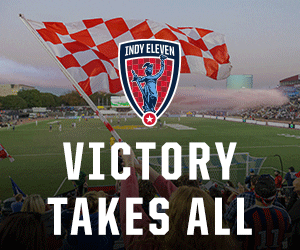As the annual, month-long Black History observance continues, now is a timely moment to revisit the struggles of succeeding generations of African-Americans to gain access to financial institutions, fair lending, and for many – the elusive opportunity to build family wealth. When we examine this aspect of our history, what affects our lending and wealth-building in 2011 is in many ways the latest version of a journey that began more than 200 years ago.
According to the National Archives, more than 185,000 African-Americans served in the United States Colored Troops during the Civil War. For nearly all of these servicemen, military wages and bounty monies were the first time in their lives that they were paid for their services. As a result, having a bank account represented a source of measurable pride and progress.
Starting in 1864, the first banks created for African-American soldiers were largely in the South. The Military Savings Bank at Beaufort, S.C., later became known as the South Carolina Freedmen’s Savings Bank. In Louisiana, the Free Labor Bank served African-American soldiers and former slaves who worked on plantations controlled by the federal government. Regardless of locale, the goal was to incorporate economic opportunity into the transition from slavery to freedom.
Chartered in 1865 to serve the financial needs of former slaves, the Freedmen’s Savings and Trust opened in January 1866. Eventually Freedmen’s grew to 37 branches in 17 states with an estimated 70,000 depositors and $75 million in value.
However, a series of management errors and fraud prompted Frederick Douglass in 1874, in a new role as bank president, to ask Congress to close the bank. Although chartered by Congress, there was no federal regulatory agency comparable to today’s Federal Deposit Insurance Corporation (FDIC) to protect depositors. As a result, many depositors received nothing and others only a fraction of their monies. Douglass also lost the $10,000 he had on deposit.
In 1874, the resentments of so many Blacks literally losing their life savings began a deep distrust of banks in the Black community – a distrust that still lingers for many African-Americans today.
It was not until 1888 that Capital Savings Bank opened in Washington, DC. In its first four years of operations, deposits grew to more than $300,000. Until its closing in 1902, many Black businesses and homeowners were its customers.
Between 1888 and 1934, a total of 134 Black banks were established. Additionally, the number of Black businesses increased from 4,000 in 1867 to 50,000 in 1917.
Unfortunately, the 1930s Great Depression caused a panicked run from which many banks, including Black-owned ones, never recovered. From 1924-1942, the National Negro Bankers Association sought to provide a forum for consultation and cooperation among its more than 70-member institutions.
Today, the number of African-American-owned banks does not reflect our populace as a people. While we are more than 39 million, or 12.9 percent of the U.S. population, the Federal Reserve’s most recent reports reveal that as of late 2010, only 28 U.S. banks are owned by African-Americans. Our lack of ownership – as a people – is a significant contribution to others with a distinctly different American experience becoming wealthy.
When we do not control our collective wealth, it becomes more understandable why we have so little of it. Latino and African-American communities together represent more than 60 percent of the nation’s households without bank accounts. Further, when we turn to alternative financial services instead of full-service banking, each year, $11 billion from the pockets of moderate- and low-income households become lucrative fees for alternative financial services, such as high-interest, short-term lenders.
From Reconstruction forward to 2011, African-Americans still have an unanswered question: how do we, as a people, trust financial institutions to serve our banking needs in a manner that broadens the opportunity to accumulate more wealth?
Charlene Crowell is the Center for Responsible Lending’s communications manager. She can be reached at: Charlene.crowell@responsiblelending.org.






